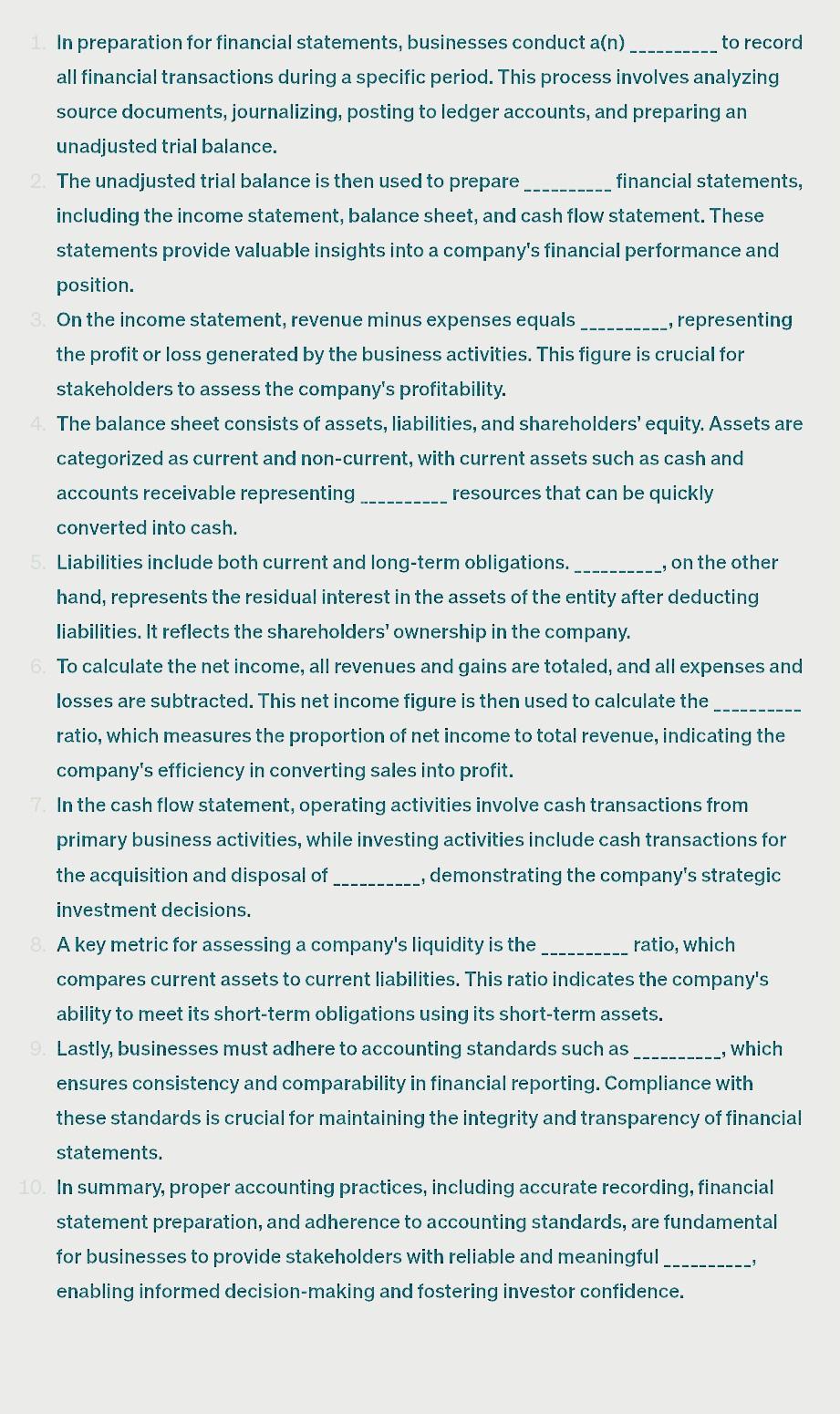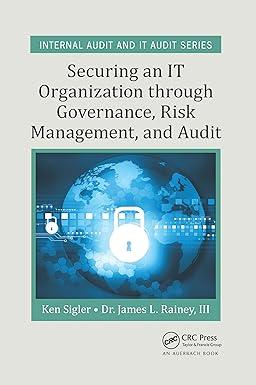Answered step by step
Verified Expert Solution
Question
1 Approved Answer
In preparation for financial statements, businesses conduct a(n) to record all financial transactions during a specific period. This process involves analyzing source documents, journalizing, posting

In preparation for financial statements, businesses conduct a(n) to record all financial transactions during a specific period. This process involves analyzing source documents, journalizing, posting to ledger accounts, and preparing an unadjusted trial balance. The unadjusted trial balance is then used to prepare financial statements, including the income statement, balance sheet, and cash flow statement. These statements provide valuable insights into a company's financial performance and position. On the income statement, revenue minus expenses equals , representing the profit or loss generated by the business activities. This figure is crucial for stakeholders to assess the company's profitability. The balance sheet consists of assets, liabilities, and shareholders' equity. Assets are categorized as current and non-current, with current assets such as cash and accounts receivable representing resources that can be quickly converted into cash. Liabilities include both current and long-term obligations. , on the other hand, represents the residual interest in the assets of the entity after deducting liabilities. It reflects the shareholders' ownership in the company. To calculate the net income, all revenues and gains are totaled, and all expenses and losses are subtracted. This net income figure is then used to calculate the ratio, which measures the proportion of net income to total revenue, indicating the company's efficiency in converting sales into profit. In the cash flow statement, operating activities involve cash transactions from primary business activities, while investing activities include cash transactions for the acquisition and disposal of , demonstrating the company's strategic investment decisions. A key metric for assessing a company's liquidity is the ratio, which compares current assets to current liabilities. This ratio indicates the company's ability to meet its short-term obligations using its short-term assets. Lastly, businesses must adhere to accounting standards such as , which ensures consistency and comparability in financial reporting. Compliance with these standards is crucial for maintaining the integrity and transparency of financial statements. In summary, proper accounting practices, including accurate recording, financial statement preparation, and adherence to accounting standards, are fundamental for businesses to provide stakeholders with reliable and meaningful enabling informed decision-making and fostering investor confidence
Step by Step Solution
There are 3 Steps involved in it
Step: 1

Get Instant Access to Expert-Tailored Solutions
See step-by-step solutions with expert insights and AI powered tools for academic success
Step: 2

Step: 3

Ace Your Homework with AI
Get the answers you need in no time with our AI-driven, step-by-step assistance
Get Started


